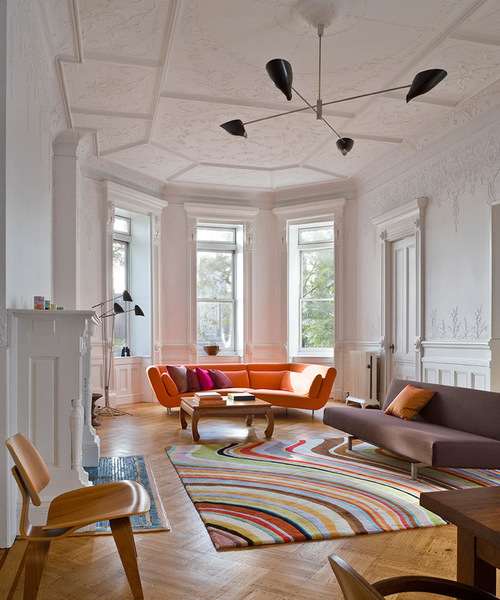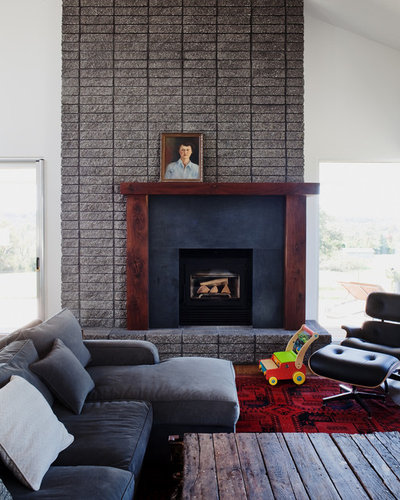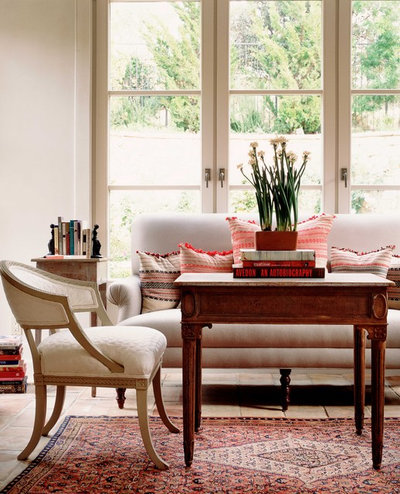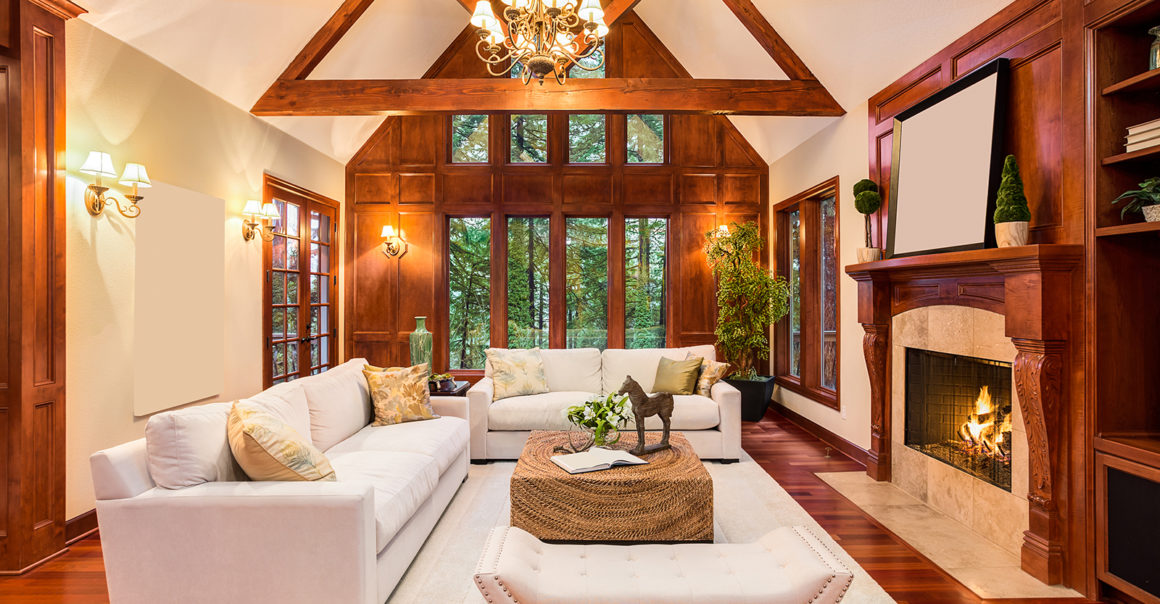
By Gabrielle Di Stefano, Houzz
When updating your living room, go back to basics and look at your room’s architectural details. It doesn’t matter if your home’s architecture is contemporary, transitional, modern or traditional — details like beams, niches and moldings can help convey the style you want, even without a structural remodel. Here are some ideas to consider.
Note the current architectural features. While modern architecture generally plays down embellishments, traditional architecture usually has more elaborate windows, ceilings, walls and doors. A redesign can highlight existing features, push them into the background or add new ones.

Many of us love both modern and traditional styles. A transitional living room can help you get the best of both worlds. Try keeping your architectural features neutral in color and show off your style through your furniture. This stunning living room’s architecture pays homage to the past but honors the homeowner’s style with the iconic, eclectic furniture choices. More about transitional style
Add texture to your fireplace. If your room has a fireplace, consider beefing it up with a textural element. This granite fireplace surround gives the room an important visual focus while staying true to the room’s clean form. Mix and Match Fabric
Install ceiling beams. Many of today’s ceilings are very simple. Ceiling beams can add some style without feeling too traditional. Faux timber beams are much lighter in weight and easier to install, and the warmth and interest they add to a room speaks volumes. Consider the scale of both beams and room. You don’t want the beams to feel too heavy for the space.
Tip: Install additional lighting right in the beams. This can be useful if you want to hang a heavy pendant light and the ceiling joists don’t line up.
Add a niche or two. Going through a bigger remodel? A niche can be a practical and eye-pleasing architectural addition. If you have a dead corner, a small niche with a seat for one could solve the problem. Shelving alone works wonders if built-in seating is too difficult. Boost Interest in the Room With Beadboard
Bring back the brick. The 1970s turned many of us against the internal exposed brick wall — happily this look is on the rise again. Done well, humble brick adds texture and character to many styles of architecture. Old bricks were often handmade and have a beautiful feel. New bricks can entice the colors out of your flooring and furniture. Try Cork Flooring for a Texturized Look
Tip: Don’t forget to have older bricks resealed for extra insulation. Use a matte sealant for a more organic, earthy look.
Update your walls. If you have a living room devoid of any real architectural features, use wall frames to add simple, affordable details. If your room already has a chair rail, add frames just below the rail and paint them a contrasting color.
Tip: The size of a wall frame is not the most important detail for this installation. Make sure you leave 2¾ to 3½ inches between each frame and that the frame sits 3 to 4 inches up from the baseboard, then you can work out the size of each frame. Measure and mark the design in pencil on the whole wall first. This may seem like overkill, but balance is everything with framing.




